Torn between a 3-link and 4-link suspension layout? You’re not alone. In the motoring landscape, it’s not uncommon to witness fiery debates about what are, arguably, two of the most popular off-road setups.
At face value, a multi-link solid axle suspension is superior to independent setups in an off-road setting. It’s worth mentioning that both 3-link and 4-link fall into that category.
But why do you need a multi-link arrangement in the first place? Moreover, is one design better than the other?
Join us as we take an in-depth look at 3-link and 4-link suspensions, discussing the pros and cons and finding out which one’s the better choice.
Why Use a Solid Axle Multi-Link Suspension?
Any independent suspension featuring three or more control arms can be considered a multi-link suspension.
The setup is employed to improve handling and increase the vehicle’s lateral stiffness. You’ll come across these in most high-end SUVs configured for specific applications.
For the sake of our argument, let’s focus on the more off-road side of things, discussing why a solid axle multi-link setup is more popular than an independent arrangement on hardcore 4x4s.
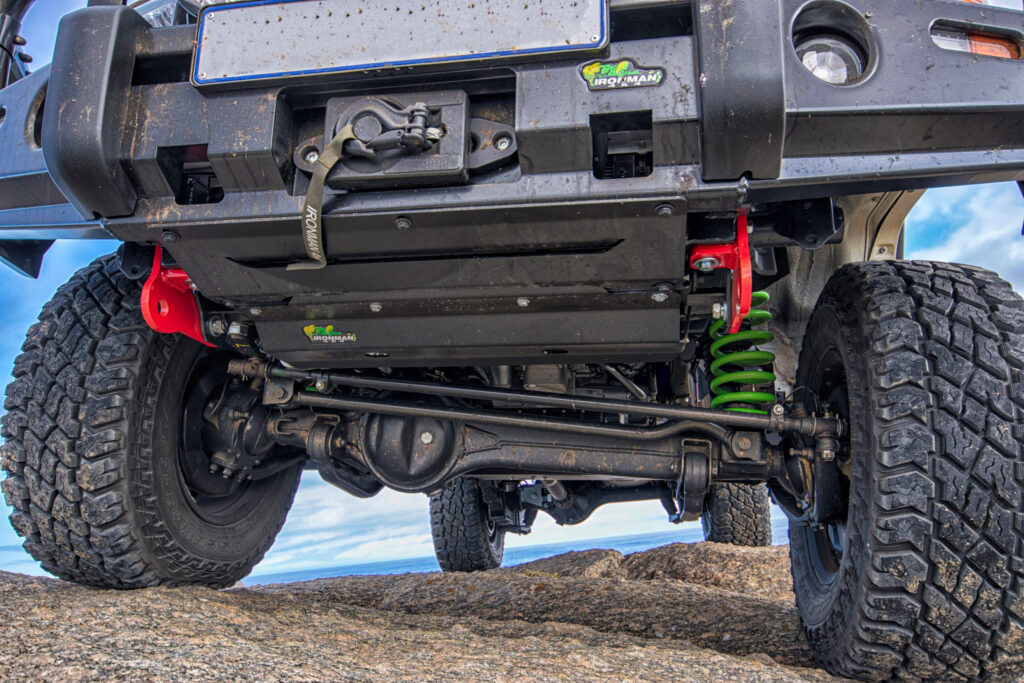
The primary reason, of course, is enhanced articulation. Simplicity and cost also play key roles. That said, solid axles come with their own set of drawbacks.
A 4×4’s solid axle should ideally move in a vertical direction while putting down the power. There shouldn’t exist any kind of lateral or fore-and-aft movements, as these could unsettle the vehicle.
In a coilover solid-axle suspension, which is more common these days, the spring and damper system only takes care of the sprung weight, meaning the axle is vulnerable to undesirable multi-directional movements.
This is where a solid axle multi-link comes in. These help control the travel path and roll of the axle, offering improved articulation without sacrificing ride and handling.
Of these, 4-link and three-link suspension geometry is commonly used in the off-road scene. Let’s understand them better.
How Does 4-Link Suspension Work?
Let’s start with the mechanics of a 4-link suspension and then work our way toward understanding a 3-link setup.
As the name suggests, a 4-link suspension has four individual links (two upper and two lower), with the ends of each rod bolted to the axle and chassis, respectively.
The upper links prevent the axle from rotating, while the lower links address the axle’s fore-and-aft movements.

Why you’d want this particular design or its various arrangements is discussed in the following sections.
Depending on the configuration, you have multiple types of 4-link suspensions. The basic setup can be either parallel or triangulated, with the latter split into single and double-triangulated designs, each having its pros and cons.
When viewed from the top or the side, a parallelly arranged 4-link suspension will often have its upper and lower links running parallel to each other.
However, in a single triangulated setup, while the lower bars remain in a parallel arrangement, the upper bars are placed at an angle relative to the vehicle’s centerline. You may also see parallel upper arms and triangular lowers in some builds.
Regardless, when viewed from the top, both setups form what looks like a triangle, lending it the name.
In a double-triangulated 4-link suspension, both the upper and lower bars are arranged at an angle, with each set having a common center point.
Pros and Cons Of 4-Link Suspension
There is no such thing as a perfect suspension. It all depends on your build and what sort of setup you’re after.
That said, running a 4-link arrangement does come with its perks. But as with anything, the setup also has its fair share of downsides.
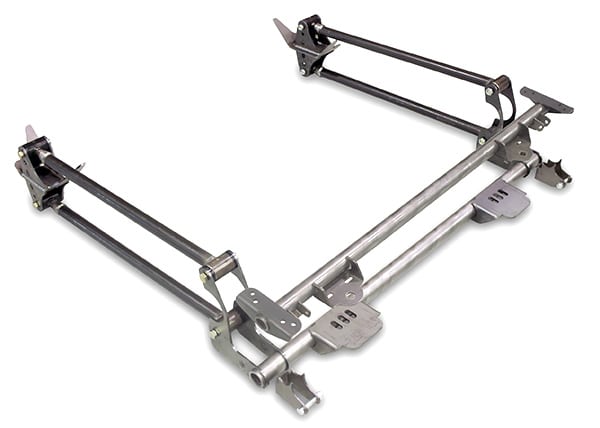
First, we’ll go over the advantages and disadvantages of a 4-link parallel arrangement and then discuss the triangulated setup. Here are some of the pros of parallel 4-link suspension:
- Relatively easier to build and install
- Doesn’t take up a lot of space, offering more room for other chassis components
- You may run an inboard or outboard setup, depending on your needs
Cons of this suspension type include:
- Higher chances of axle roll and flex steer
- Requires a Panhard bar to stabilize the axle’s side-to-side movement
- This adds extra cost
Some of the advantages of 4-Link triangulated suspension are as follows:
- More stability
- Less roll steer
- No Panhard bar is required, especially in a double-triangulated setup
- Higher levels of customizability
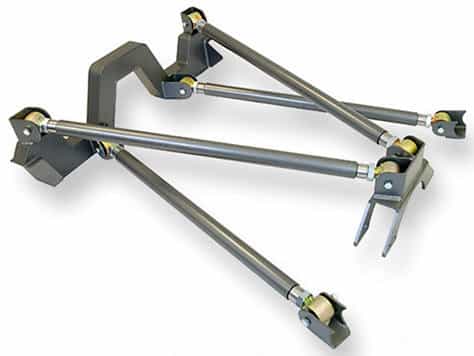
Cons of this suspension type:
- More complex to design and build
- You may run into packaging issues
- Relatively more fine-tuning required
What Is 3-Link Suspension?
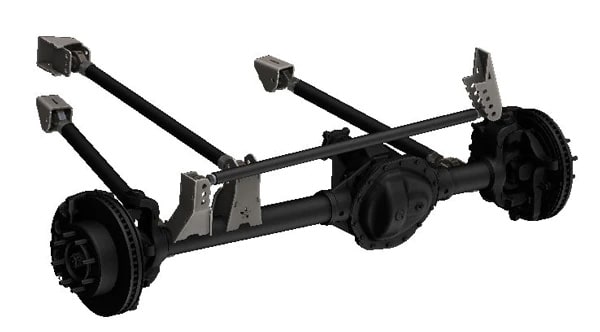
A 3-link suspension, as you might’ve guessed, has three links that hold the axle and chassis together. Oftentimes, you’ll see a fourth link, which is nothing but a Panhard bar integrated into the build for better stability.
It’s pretty easy to visualize a 3-link suspension if you’ve understood the 4-link design we’ve discussed. In simple terms, a 3-link arrangement is nothing more than a 4-link triangulated/parallel without one of the upper control arms.
There are, of course, various 3-link configurations that people use depending on their location and requirements. You’ll find some builds running a Wishbone 3 link or a parallel 3 link with a Panhard bar.
Why you’d want a 3-link design boils down to packaging. For instance, in some makes, the differential housing, which is sometimes referred to as the “pumpkin,” is located off-center.
This offset means the driveline and other chassis components are often routed to clear the housing. In this situation, a 3-link is the ideal choice since it doesn’t run the risk of hitting the chassis and steering components.
3-Link Suspension: Pros and Cons
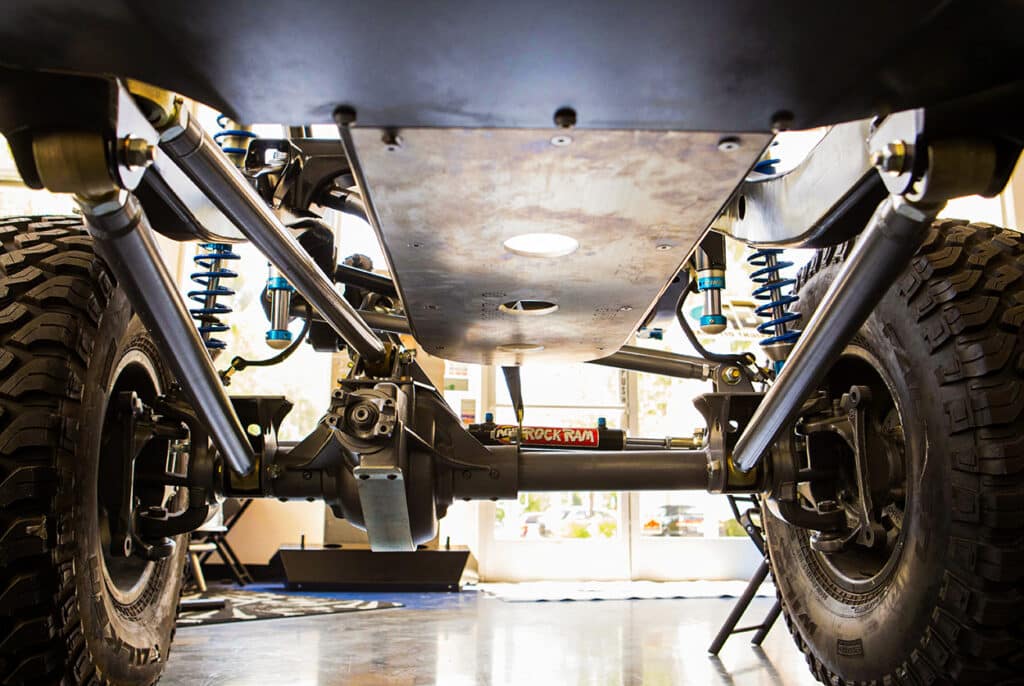
As mentioned, a 3-link system is a pretty reliable setup for an off-road rig. However, it’s not perfect. While there are advantages to employing a 3-link design, the arrangement does come with several drawbacks as well.
Let’s start with the pros of 3-Link suspension:
- Easier to package around exhaust and steering components
- Simpler design
- Better cornering characteristics
- Less binding issues and can pivot easily
- Relatively more suspension travel (track bar dependent)
Disadvantages include:
- Noticeably higher chances of axle wrap/roll
- Requires a Panhard/track bar
- The upper link is subjected to more sideloads
3-Link vs 4-Link Front and Rear Suspension
The decision between a 3-link and a 4-link is almost always affected by packaging constraints.

While it is evident that both systems have their pros and cons, deciding on which one to use boils down to your vehicle’s steering, driveline, differential arrangement, and the available space for installing the multi-link setup.
So, as you can tell, the rear is more suited to run a 4-link (triangulated) in most applications.
That’s not to say a 3-link at the rear is impossible. But since a 3-link arrangement requires a Panhard for stability, it adds another possible failure point and takes away some of the wheel articulation.
Most high-end off-road rigs prefer a double-triangulated 4-link rear suspension because of the inherent stability and lack of flex steer.
Also, if an upper link fails, the suspension can still function, albeit as a triangulated 3-link.
That said, for the majority of folks out there, a 3-link would suffice. Depending on your available space and packaging concerns, you may choose between a wishbone 3-link or a parallel 3-link.
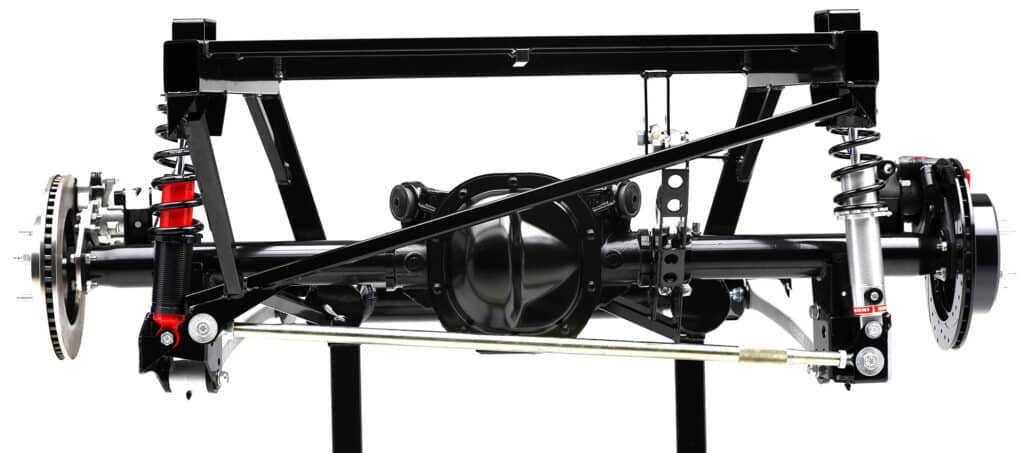
At the front, things can be a bit complicated. There are the engine, steering components, and other things to factor in when designing a suspension arrangement.
Fabricating a 4-link can be difficult, especially if you have a standard steering box (with or without power steering). The presence of drag links will limit the use of a 4-link suspension on such a vehicle.
On the other hand, having a full hydro steering with an axle-mounted steering ram should unlock the potential for running a 4-link setup.
This significantly frees up space since there is no mechanical connection between the steering wheel and the actual wheels.
Of course, engine size matters as well. If you have a big V8, for instance, there won’t be any room to run a triangulated 4 link.
Maybe it’s an inline-6? But then you will run into packaging issues on one side, owing to the exhaust system. So it all rather boils down to space and money, of course.
3-Link vs 4-Link: Which One Handles Better? What About Lift?
Again, this depends on your build. On a 1000-plus hp or whp desert beast, you’re better off with a 4-link suspension, preferably a double-triangulated design.
But on a daily driver, both 3-link and 4-link offer a similar set of benefits in the handling department. The concern here, of course, is space.
But where the 3-link does have an advantage is in terms of binding issues. The lack of binding concerns in a 3-link lends it better cornering characteristics, as opposed to a 4-link setup.
However, a well-tuned 4-link can outperform a poorly set up 3-link. Tuning is as important, if not more than the design itself.
In terms of suspension lift, it’s better to install adjustable panhard bars and brackets if you intend on messing around with ride height.
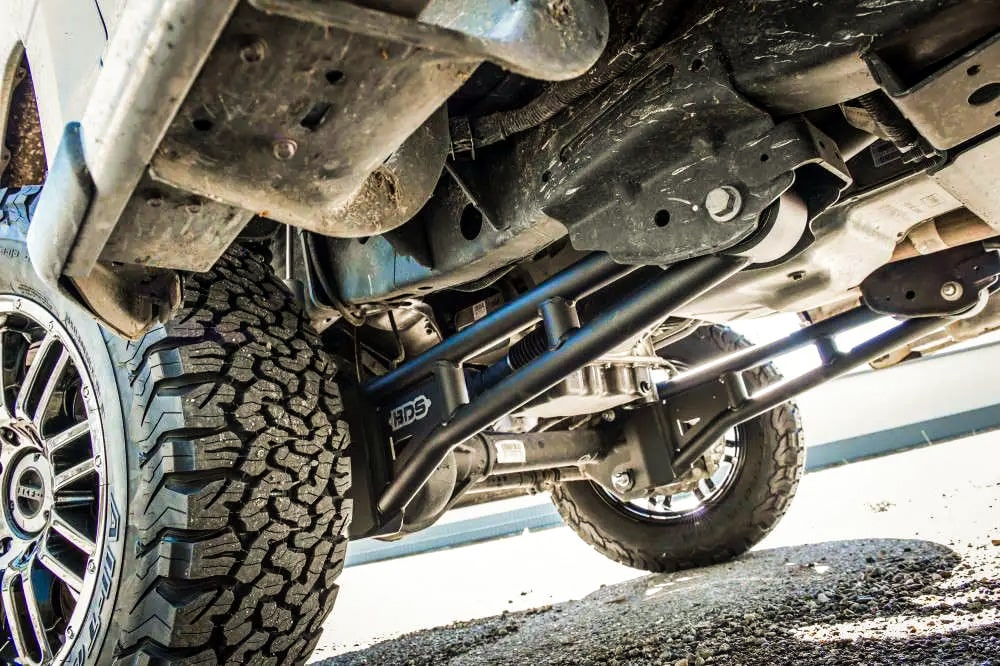
Realize that by changing the ride height, you throw off the suspension geometry and significantly alter the link angles.
Since these systems are employed to keep a relatively constant pinion angle, a change in the arrangement would unlock hell.
Depending on how severe it is, you may experience issues like poor handling, increased wear, damaged drivelines, steering components, and more.
Understand that there is no one-size-fits-all approach when it comes to suspension design.
It’s far from a Friday afternoon job, requiring complicated engineering calculations, which are generally beyond the scope of an average user.
Final Thoughts
Between 3-link and 4-link, it’s a matter of packaging, to be honest. Both suspension systems have their fair share of pros and cons. The best possible solution is to choose a design you think is the right fit.
Deciding on which suspension layout is best is more complex than you think. Moreover, the process is far from something trivial.
Many calculations and fine-tuning await you before ending up with what you consider a perfect suspension for your 4×4.
The bottom line is that there isn’t an ideal suspension setup. The truck/SUV you own comes with several limitations, dynamic or otherwise. That’s just how they are.
To overcome those limitations, you’ll have to design a suspension layout that best fits your vehicle, which often requires compromising on many fronts.
What suspension setup do you prefer? Let us know by leaving a comment below!

